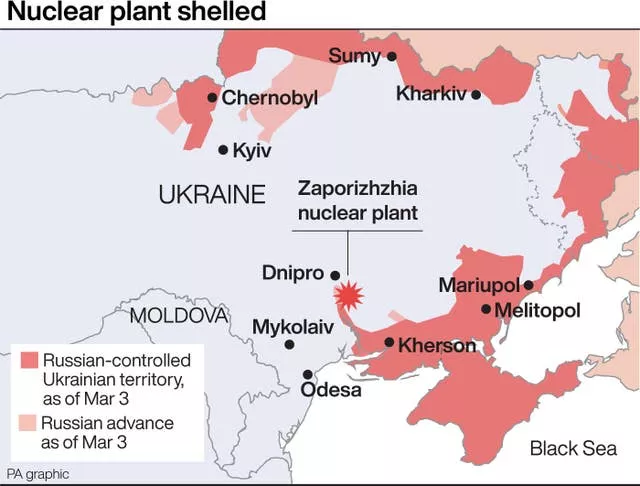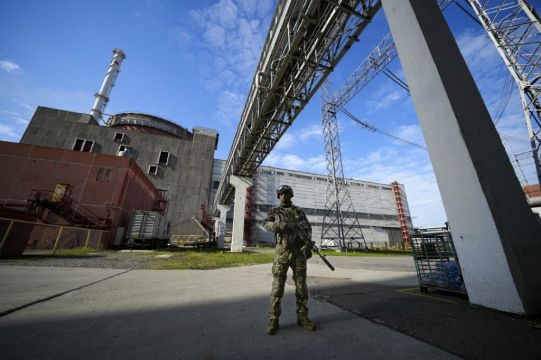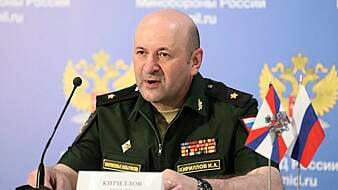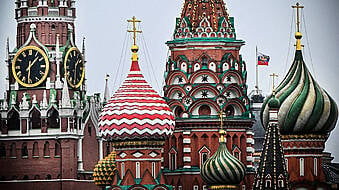The Zaporizhzhia nuclear power plant in the middle of the fighting in Ukraine was temporarily cut off from the electrical grid on Thursday because of fire damage.
The incident caused a blackout in the region and heightened fears of a catastrophe in a country haunted by the Chernobyl disaster.
The complex, Europe’s largest nuclear plant, has been occupied by Russian forces and operated by Ukrainian workers since the early days of the six-month-old war.
Ukraine has claimed Russia is essentially holding the plant hostage, storing weapons there and launching attacks from around it, while Moscow accuses Ukraine of recklessly firing on the facility.
On Thursday, the plant was cut off from the grid for the first time in its history after fires damaged the last operating regular transmission line, according to Ukraine’s nuclear power agency, Energoatom.

It was not immediately clear whether the damaged line carried outgoing electricity or incoming power, needed for the reactors’ vital cooling systems.
A back-up line supplying electricity from another plant remained in place, Energoatom said.
The entire Zaporizhzhia region lost power, according to Yevgeny Balitsky, the Russia-installed governor.
As a result of the damage, the two reactors still in use, out of the plant’s six, went offline, he said, but one was quickly restored, as was electricity to the area.
Mr Balitsky blamed the transmission-line damage on a Ukrainian attack. Energoatom blamed “actions of the invaders”.
Many nuclear power plants are designed to automatically shut down or at least reduce reactor output in the event of a loss of outgoing transmission lines.
The UN’s International Atomic Agency said Ukraine informed it that the reactors’ emergency protection systems were triggered and all safety systems remained operational.
The three regular transmission lines to the plant are out of service because of previous war damage.
A loss of power to the Zaporizhzhia reactors’ cooling systems could cause a nuclear meltdown, a major concern of experts and residents warily watching the fighting.
“Anybody who understands nuclear safety issues has been trembling for the last six months,” Mycle Schneider, a consultant and co-ordinator of the World Nuclear Industry Status Report, said before the latest incident.
Ukraine cannot simply shut down its nuclear plants during the war because it is heavily reliant on them. Its 15 reactors at four stations provide about half of its electricity.
Still, an armed conflict near a working atomic plant is troubling for many experts and people living nearby.
That fear is palpable just across the Dnieper River in Nikopol, where residents have been under nearly constant Russian shelling since July 12th, with eight people killed, 850 buildings damaged and over half the population of 100,000 fleeing the city.
Fighting in early March caused a brief fire at the plant’s training complex that officials said did not result in the release of any radiation.
Ukrainian president Volodymyr Zelenskiy has said Russia’s military actions there amount to “nuclear blackmail”.







